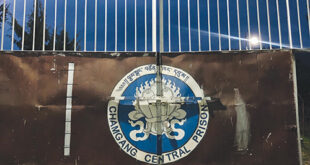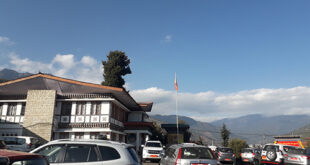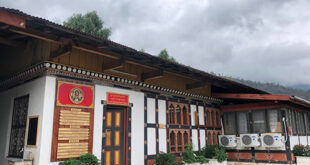 In what the hydroelectricity department is calling the ‘most prized’ hydro project out of the 10,000 MW target, the earlier 1,800 MW run of the river hydro project is now scheduled to become a 2,640 MW reservoir project.
In what the hydroelectricity department is calling the ‘most prized’ hydro project out of the 10,000 MW target, the earlier 1,800 MW run of the river hydro project is now scheduled to become a 2,640 MW reservoir project.
After a promising Pre Feasibility Report (PFR) the decision to carry out a Detailed Project Report (DPR) is expected to be approved later this month in the Empowered Joint Group meeting on December 20 in Delhi.
Though only slightly bigger than its 2,560 MW Sunkosh counterpart the Kuri Gongri project will generate nearly double the electricity of Sunkosh.
According to hydropower experts the Mega Watt or MW of a project is only the maximum power generating capacity of the turbine machines but the real indicator for power generation is to watch how much million units are generated in total over a year.
Sunkosh will generate 5,900 million units a year which when calculated at Nu 2 per unit will give Nu 10.8 bn in revenue. Kuri Gongri though almost the same project size will generate more than 10,000 plus million units a year giving potential revenue of more than Nu 20 bn a year.
Even the third biggest project of Punatsangchu at 1,200 MW will give just 5,700 million units of power and the existing 1020 MW Tala by itself currently generates 4,865 million units.
In international terms the new project will be generating more than twice the power of the famed 2,080 MW American ‘Hoover Dam’ which generates only around 4,200 million units a year.
Department of Hydroelectricity experts say that Kuri Gongri has higher generation capacity mainly because the dam will be built after the confluence of the Kurichu and Gongri rivers getting higher water flow than the Sunkosh River. The combined Kuri Gongri will generate 680 cm3/s of water compared to 480 cm3/s for the Sunkosh river.
Kuri Gongri was earlier planned as a run of the river project like Tala, Chukha which means that little or no water is stored in a dam and the turbines run on the continuously flowing river. Later after the PFR it was found that it would be far better to have Kuri Gongri as a reservoir project meaning that a big dam will now be built with the capacity to store river water for months.
“The earlier run of the river project had to be abandoned as it would entail diverting the Gongri River into Kurichu, building 85 km of tunnels and lose any future hydropower potential from the Gongri river,” said Yeshey Wangdi, the Director General of the Department of Energy.
The DG said that the approximate capital cost of the new project would be around Nu 144 bn. However, if the loan interest during the construction period is included the cost is expected to be higher at around Nu 200 bn.
Earlier in 2012 after the PFR there were five options. Of the five, three options which included building separate dams on the two rivers were dropped. The last two options which consisted of building dams after the confluence at varying spots are under consideration as option 4 A and option 4 B.
Of the two the PFR report which was done by the National Hydropower Corporation of India is more in favor of option 4 A which includes building a 250 meter high and 355 meter long dam a few hundred meters after the two river join. This dam would create a 30 km long lake in both the river gorges storing around 2.6 bn cubic meters of water at any given time. The project would also have a nine year construction period breaching the 2020 target by around two years.
“Once the DPR is done we will know the exact details the project size may even increase up to 3,000 MW or even become lesser,” said the DG.
He clarified that since the area had little or no habitation the displacement would be very minimal.
“The project for India will have the additional advantage of flood control,” said the DG. A major reservoir project like Kuri Gongri will also allow Bhutan to make additional money by generating power at the peak hours of morning and evening when energy demand and prices are at their highest in India.
The reservoir project will also increase Bhutan’s winter generation capacity by generating a minimum of 285 to 295 MW even in the driest month of February.
The new site is expected to benefit from the upcoming Gyelpozhing-Nanglam highway. However, once the project is complete sections of the highway will have to be realigned to avoid being submerged.
The DG clarified that the project would definitely happen as it was agreed to between the two countries under the 10,000 MW projects.
The 2,640 MW project is a bilateral project between the two governments whereby 70 percent of the financing is on loan and 30 percent is on grant.
The PFR showed the project to be feasible after looking at the hydrology, geo-technical features, survey of the land and location. The DPR will study these in greater detail, optimize costs and project location and come out with more exact figures on everything.
This project will become the fourth reservoir project after the 2,560 MW Sunkosh, 620 MW Amochu and 180 MW Bunakha project.
Reservoirs are generally preferred for energy security and flood control.
 The Bhutanese Leading the way.
The Bhutanese Leading the way.



